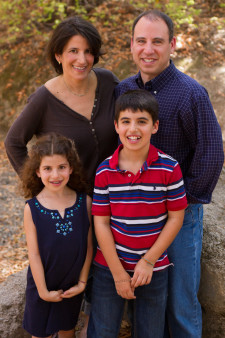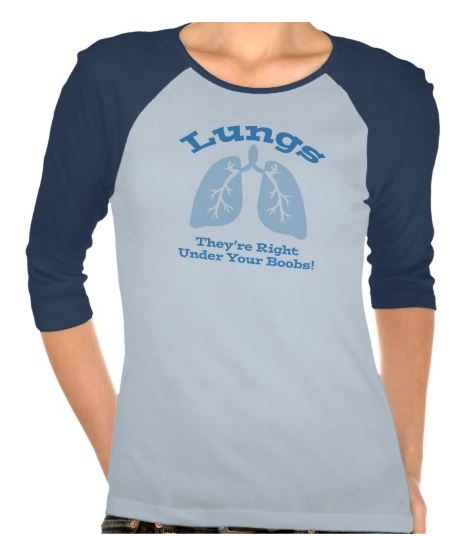Cancer Patient-ing Like it’s My JOB. Part 3 of 3: Miscellaneous “Alternatives” – Oh, That’s Just Mom’s Sound Healer
[This is Part #3 of a 3 part series — Part 1: Diet & Supplements – Green Juice, Birthday Cake and Lots of Pills; Part 2: Exercise – Basically a Love Letter to Peloton; Part 3: Misc. “Alternative” Items – Oh, That’s Just Mom’s Sound Healer]
PART III – Miscellaneous “Alternatives” – Oh, That’s Just Mom’s Sound Healer
Please see my important disclaimers discussed in Part 1, which apply here, too.
Sometimes I feel self-conscious about revealing all the other things I’m trying, as they range from mainstream enough that even some hospitals are offering them (e.g. acupuncture), to pretty freaky-deaky. If I’m about to disclose something closer to the freaky-deaky end of the spectrum, I always start with, “I know this seems crazy, but ….” And then a friend said to me, “You know what? It seems to me that doing whatever you need to do to save your life is the sanest thing in the world to me.” Woman has a point, no?
Of course, I try to research and be responsible. I don’t try everything suggested to me. I am curious and open to alternative treatments, as long as they can be used alongside my western meds. Because, let’s be honest, I may belieeeeve, but only after I’ve swallowed my Xalkori pills for the day.
So, what’s a girl who went to Berkeley, but never inhaled (truly), who had natural childbirths with a doula, but only in the safety of a hospital setting, who enjoys the company of creative people, but trotted herself off to law school, doing? In addition to my conventional medicine, plus the diet and exercise discussed in Part I and Part II, here’s my list of alternative approaches:
- Traditional Chinese Medicine (“TCM”): I see a TCM doctor regularly (or at least I did before Covid). I get acupuncture, and sometimes acupressure or cupping. I researched and chose my TCM doc very carefully. She’s experienced in working with cancer patients.
- Retreats: I have done retreats for cancer patients at both Harmony Hill and Commonweal. Both programs are good. But, Commonweal was longer and much more in-depth. The things I learned about myself and how to live with this diagnosis from Commonweal’s experts were truly life-changing and I can’t recommend it highly enough. I’ve also heard that The Smith Center runs retreats similar to Commonweal.
- Meditation: This is a hard one for me. I continue to try to work this into my routine, sometimes with more success than others. I’ve purchased recordings and downloaded apps. The thing that’s worked the best for me is keeping it to 10 minutes, buying a comfortable cushion to sit on, and having sessions handy on my Peloton app. Here’s the truth, very few people feel competent at meditation, but it does get easier with practice and it does really help clear my cluttered mind and calm my whole system … when I actually sit my ass down and do it.
- Therapy: Mental health is important. If you’re hankering for a DIY project, go to IKEA. For mental health, seek expert guidance. The trick here is to find the right therapist, which can be hard. For cancer patients, I always recommend seeking out someone with experience helping cancer patients. Some healthcare centers now offer special psycho-oncology departments, which sounds awful (like some room with padded walls for patients who’ve lost their shit), but is actually awesome – a department specializing in the mental health issues common to cancer patients. It’s worth checking if there’s something like this available to you.
- Zentangle and Art: I started doing Zentangle art after I was diagnosed in 2014. Zentangle is sort of like if meditation and drawing had a baby. I find it so fun and relaxing, I became a Certified Zentangle Teacher “CZT” and now teach (and I make my classes free for those in need, including patients in active cancer treatment). I also enjoy art more generally as an outlet and therapy (in the way others might use journaling or writing poetry). I have taken painting classes offered at my local hospital for cancer patients. During the pandemic I have taken several online art classes.
- Sauna: On the advice of Kris Carr and other wellness experts, I invested in an infrared sauna. I love that thing. I sit in it a few times a week, and always after my scans, so I can get that nasty contrast crap out of my system as fast as possible.
- Massage & Reiki: Massage is a rare treat for me, and with the pandemic I haven’t had one in eons. However, I am a huge fan. A cancer diagnosis is stressful. I carry a lot of muscle tension in my shoulders, back and jaw and get lots of headaches. Sometimes massage is the only thing that can help me get relief. I also have a few massage tools. One of my favorites are these simple yoga therapy balls. Additionally, a wonderful friend of mine does Reiki, which can also be very helpful with both physical aches and pains, as well as more mental/emotional/anxiety struggles.
- Small Rituals: I don’t do a lot of praying. It just doesn’t work for me. But I do have some rituals that may overlap with prayer a bit. After seeing a friend and fellow patient sing to her pills, I laughed, and then … did the same. Now, every day, before I pop my Xalkori pill, I take a couple seconds to humm to it and think about how grateful I am for it. Sometimes I hold the pill out for my kids to hum to it, too. It’s ridiculous, but it’s become important to me. Another ritual is when I’m lying still, like when I’m on the acupuncture table, or after a yoga class, I repeat a mantra in my head “my lungs are clear, I am in perfect health.” You are welcome to use that, or come up with your own, my only suggestion is to keep it positive (i.e., a mantra that focuses on what you don’t want, like “I don’t have cancer” focuses more on the negative, which can be counterproductive, constantly repeating the c-word in your head).
- Tokens: I have a ring I purchased a few months after I was diagnosed that says “she believed she could, do she did.” I wear it every day and it helps me remind myself to stay open to possibilities. I also have a tray of special rocks, shells, crystals and other things I’ve collected or been gifted. I usually grab one or more to put in my pocket when I’m going to a medical appointment.
- Sound Healing: Ok, I know this one sounds super “woo woo,” but give me a second here. We’ve all seen how an opera singer can break a glass with just the sound of her voice, or here’s a cool visual of sound waves moving sand and water particles. So, is it such a crazy leap to think that sound vibrations might impact our cells and help them heal? I have tried various forms of sound healing (listening to specific recordings, attending a pre-pandemic concert, and working 1:1 with a master sound healer). This fell squarely under my category of “can’t hurt, might help,” with bonus points for totally freaking out my kids who have to explain the weird sounds coming from the living room to their friends, “oh, that? that’s just my mom’s sound healer.”
I feel badly that some of these items may not be accessible to all and reflect my privilege, which I discussed in my disclaimers. However, I have forged ahead because I hope sharing a list of things I do in addition to my conventional medical care is, on balance, helpful. There seems to be something of a stigma around discussing these things which creates a vacuum that gets filled with predatory nonsense. It’s heartbreaking to see desperate cancer patients spending their precious savings on quackery, subjecting themselves to harmful protocols, or alternatively avoiding beneficial supplemental approaches because of fear or overwhelm. Statistics I’ve seen say that more than half of cancer patients pursue integrative approaches. And if the amount of personal inquiries I’ve received on this topic is any indication, I have a lot of company over here in my bi-curious “I like my oncologist, but a sound therapist sounds pretty cool, too” land. It’s time for this conversation to come out of the closet.



